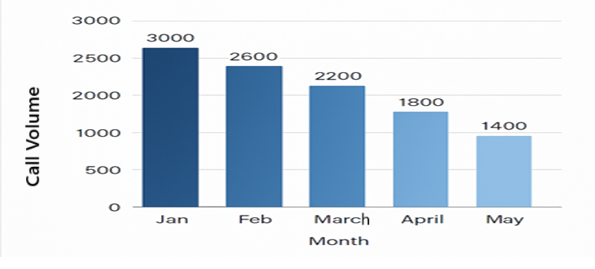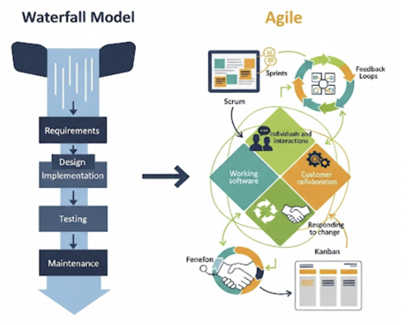Evolving Field Service Management – Reducing Wait Times and Call Volume
Customers now expect real-time updates, seamless communication, and fast resolutions – none of which can be delivered by traditional call centres or manual processes alone. The old ways slow teams down and frustrate end users.
Customers expect to book appointments in minutes, track technicians in real time, and resolve issues without long waits in support queues. Self-service portals have become a powerful solution, streamlining customer interactions and easing the operational load on field service teams.

Why Self-Service Portals Are Key to the Future of Field Service Management
Self-service portals put control directly in the hands of customers, enabling them to:
- Schedule or reschedule service appointments
- Track field technicians in real time
- View service history and live status updates
- Access troubleshooting guides and FAQs
- Review billing information and payment details
Example – Energy Sector
Imagine a power distribution customer, Rohan, who experiences a sudden outage in his apartment. Instead of calling customer care and waiting on hold, he logs into his utility provider’s self-service portal, reports the issue, selects an appointment slot, and receives instant confirmation – all within minutes.
Standard Customer Portals for Faster Rollouts
Leading FSM platforms like Salesforce Field Service and SAP FSM come with standard customer portals that are quick to deploy, easy to configure, and fully integrated. Unlike third-party solutions that often require extensive customisation, these built-in portals offer real-time scheduling, service request logging, and job tracking out of the box – accelerating digital adoption while keeping setup costs low.
Essential Features of a High-Impact Self-Service Portal
To deliver real value to customers, a successful self-service portal should be:
- User-Friendly: Simple, intuitive interfaces that require no training.
- Mobile-Optimised: Designed with a mobile-first approach – over 70% of users access portals via mobile devices.
- Deeply Integrated: Real-time synchronisation with core FSM platforms like Salesforce Field Service and SAP FSM.
- AI-Driven: Chatbots guide users to quick resolutions, while predictive intelligence anticipates needs.
- Knowledge-Rich: Includes FAQs, how-to guides, and instructional videos to support self-resolution.
- Proactive: Sends automated SMS, email reminders, and real-time alerts to keep customers informed.
Example – Gas Utility
Meera detects a potential gas leak at home. Instead of calling emergency support and waiting on hold, she logs into her provider’s self-service portal. An AI assistant immediately guides her through essential safety steps and automatically books the nearest available technician. Within minutes, Meera feels safe, informed, and reassured.
How Self-Service Portals Reduce Call Volume and Wait Times
Organisations that implement self-service portals have reported up to a 40% reduction in inbound calls. By empowering customers to resolve issues independently, these portals streamline operations and reduce pressure on support teams.
Key benefits include:
- Automated appointment booking reduces scheduling conflicts.
- Live technician tracking means fewer “status update” calls.
- AI-driven troubleshooting resolves common issues instantly, without operator involvement.
Example – Facilities Maintenance:
In a commercial building, tenants use a self-service portal to report equipment failures. Within a few months, the call centre experiences a 30% drop in support requests, as most issues are now logged and resolved digitally – without the need for phone-based intervention.

Enhancing Field Service with TeamViewer Frontline
Through our partnership with TeamViewer, we harness the power of TeamViewer Frontline – an augmented reality (AR) – based remote support and collaboration solution. This allows engineers in the field to interact more effectively with customers and connect directly with the back-office team in real time.
Key benefits across the service ecosystem:
- For engineers: Hands-free AR guidance enables faster, safer, and more accurate troubleshooting.
- For customers: Real-time direct interaction with technicians or back-office experts provides instant resolution.
- For service providers: Reduced downtime, fewer repeat visits, and stronger customer trust.
By making communication not just digital, but immersive and collaborative, TeamViewer Frontline significantly elevates the field service experience – for everyone involved.

Taking Self-Service to the Next Level with AR Workflows
While self-service portals already empower customers, the next evolution is enabling them to resolve simple issues independently through AR-guided workflows.
Using AR-enabled instructions on their smartphones or smart glasses, customers can follow step-by-step visual guidance to:
- Perform basic troubleshooting
- Configure equipment or devices
- Complete minor maintenance tasks
This approach reduces service wait times, lowers operational costs, and gives customers greater autonomy – ensuring that engineers are only dispatched when truly necessary.
Smarter Service with AI at the Core
Artificial Intelligence is becoming a key enabler of smarter, more efficient Field Service Management and self-service experiences. When integrated with modern FSM platforms, AI enhances every stage of the service journey:
- AI-powered chatbots: Provide customers with 24/7 instant answers, guided triage, and seamless request logging.
- Predictive maintenance: Analyses equipment data to detect potential issues before failures occur.
- Optimised scheduling: Matches the right technician with the right job at the right time, boosting first-time fix rates.
- Real-time technician insights: Offers on-the-job recommendations such as fixes, spare parts, or knowledge resources to accelerate resolution.
By combining self-service portals, AI intelligence, AR workflows, and remote collaboration tools like TeamViewer Frontline, organisations can deliver a powerful blend of customer convenience, operational efficiency, and expert-assisted service.
Best Practices for Implementing a Self-Service Portal
To drive adoption and ensure long-term success, Field Service Management organisations should follow these best practices:
- Integrate systems seamlessly: Connect the self-service portal with CRM and FSM tools to enable accurate, real-time data updates.
- Adopt a mobile-first approach: Design with mobile users in mind to maximise accessibility and engagement.
- Leverage AI and analytics: Enable predictive support and personalise the customer experience.
- Use data to iterate: Collect feedback through analytics, A/B testing, and usage trends to drive continuous improvement.
- Foster community engagement: Encourage portal usage through forums, gamified Q&As, and reward-based participation models.
Pitfalls to Avoid
Even with the best intentions, self-service portal implementations can fall short. Common mistakes include:
- Overly complex interfaces that confuse or frustrate users.
- Lack of real-time integration with FSM systems, leading to missed or unassigned appointments.
- Insufficient knowledge resources that force users to fall back on call centres.
- No clear escalation paths for issues that can’t be resolved via self-service.
Example – Energy Provider:
An electricity company launched a customer portal without integrating it with their FSM system. As a result, customers booked appointments that technicians couldn’t access – leading to confusion, missed visits, and customer dissatisfaction. After implementing real-time integration, both trust and operational efficiency improved significantly.
What’s Next: The Future of Self-Service in Field Service Management
Forward-thinking organisations are already exploring the next wave of innovation in Field Service Management. Emerging trends include:
- Voice-enabled service requests: Customers initiate service through smart assistants like Alexa or Google Assistant.
- IoT and predictive maintenance: Connected devices detect issues and trigger service calls automatically.
- Augmented Reality workflows: Customers use AR tools for guided troubleshooting.
- Blockchain for service transparency: Secure records ensure trust in service authentication.
How On Device Solutions Can Help
We specialise in:
- Integrating portals with leading platforms like SAP FSM and Salesforce Field Service.
- Implementing AI chatbots and predictive tools to improve service efficiency.
- Streamlining FSM workflows to reduce wait times and call volume.
- Enabling real-time tracking, reminders, and proactive communication.
- Leveraging analytics to continuously improve customer experience.
- Extending value with TeamViewer Frontline for AR-enabled collaboration.
With our proven FSM expertise, we help service organisations deliver faster, smarter, and more efficient customer-centric operations – while keeping costs under control.
Book a consultation with On Device Solutions and discover how we can help you unlock the latest innovations in Field Service Management here or learn about our SAP FSM services.






